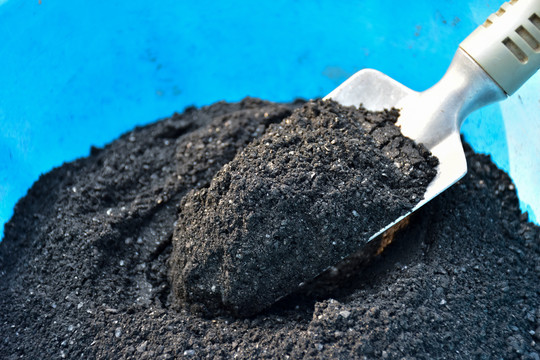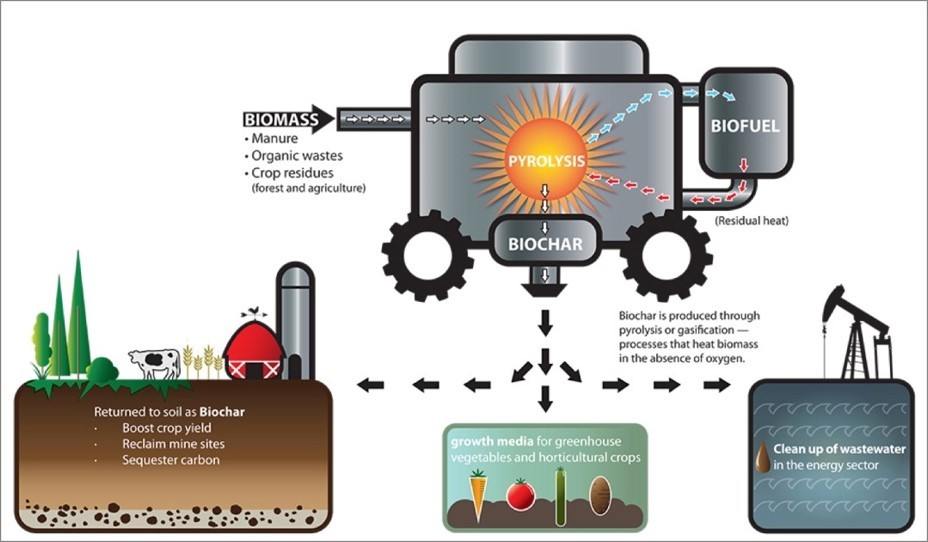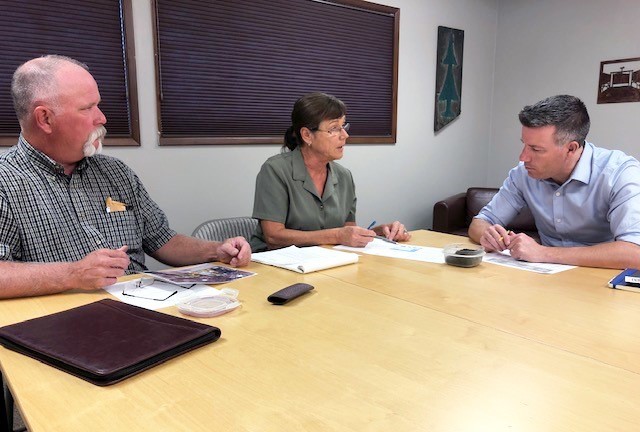March 25, 2021
Dear Friends and Neighbors,
The 12th District is one of the largest districts in our state geographically. It includes Chelan County, Douglas County, and portions of Grant and Okanogan counties. The Okanogan County portion of the district includes the communities of Pateros, Brewster, Malott, Twisp, Winthrop, and Mazama. As you may know, this is one of the most beautiful areas of the state. I greatly appreciate this region’s natural beauty and often get to enjoy its outdoor recreation and people. The Methow Valley area, in particular, is known for its creativity, which is why I am excited to share information about an impressive project that could provide significant environmental and economic benefits to our region.
As you know, wildfires have had a devastating impact on North Central Washington, including in the Methow Valley. One of the key elements to minimizing our risk of catastrophic wildfire is to engage in responsible forest management practices and to greatly reduce the small-diameter trees, organic waste, and logging slash throughout our timber lands. Thanks to the persistent efforts of C6 Forest to Farm, a federally recognized 501(c)3 nonprofit, we may soon have an option in our region to putting the logging slash and organic materials – often resulting from forest health practices – to good use with a pilot project in the Methow Valley to produce biochar.
 Biochar is a charcoal-like product produced through pyrolysis, a process that superheats biomass. A demonstration project in the Methow Valley is under development to produce biochar from excess forest waste to reduce our risk of wildfire and to improve soil in our agricultural lands.
Methow Valley biochar demonstration pilot project
In the Methow Valley, a nonprofit will soon initiate a research and demonstration project to produce biochar designed to benefit local agricultural soils and sequester carbon. According to Regeneration International, “Biochar is a charcoal-like substance that’s made by burning organic material from agricultural and forestry wastes (also called biomass) in a controlled process called pyrolysis. Although it looks a lot like common charcoal, biochar is produced using a specific process to reduce contamination and safely store carbon. During pyrolysis organic materials, such as wood chips, leaf litter or dead plants, are burned in a container with very little oxygen. As the materials burn, they release little to no contaminating fumes or smoke. During the pyrolysis process, the organic material is converted into biochar, a stable form of carbon that can’t easily escape into the atmosphere. The energy or heat created during pyrolysis can be captured and used as a form of clean energy.”
The goal is to identify optimal conditions for processing unmerchantable Douglas fir and ponderosa pine trees (as well as other forestry waste) common to our region into biochars designed for a variety of applications. The types of materials to be processed will be the same biomass that, if left in the forest, would keep raising our wildfire risk and threatening long-term forest health. Not only would removing these materials reduce our wildfire risk, designed biochar is known to have soil-enhancing qualities if applied to agricultural lands. In improving soil quality, biochar can be mixed into soil for agricultural purposes or home gardening. It has been proven to enhance soil structure, increase water retention, and decrease acidity, among other benefits. This step keeps carbon and other greenhouse gas emissions from being released into the air through wildfire or slash burning and stabilizes them into the biochar, which can be mixed into the soil for agricultural benefits.
 Pyrolysis is a super heating process that can convert excess forest debris into biochar, which can be used to sequester carbon into the ground and improve soil for agricultural production (cprsx.com).
Using pyrolysis to produce biochar
According to Washington State University’s Center for Sustaining Agriculture and Natural Resources, “Pyrolysis is the thermo-chemical conversion of dry organic materials (i.e. woody wastes) into bio-oil, syngas, and biochar.” The U.S. Biochar Initiative further describes the pyrolysis as using a pyrolizer to super-heat biomass “in the absence of oxygen at high temperatures (350-700° C) in specially designed furnaces. The most sustainable feed stocks are what's now considered waste: excess manure, wood debris, construction waste, slash from forest thinning, food processing waste, residue from methane digesters or urban tree trimmings. Most of this would be left to rot, be open-burned or dumped in a land fill. In this modern method, volatile gases, hydrocarbons and most of the oxygen and hydrogen in the biomass are burned or driven off and captured, including greenhouse gases. These captured emissions are known as syngas (synthetic gas) and can be used like natural gas. Liquids, called bio-oils, are also captured creating another source of energy, leaving carbon enriched biochar.” During pyrolysis, it is also possible to use the heat generated as a source of power. In the Methow Valley, C6 Forest to Farm’s plans start with chipping woody material provided from forest health and Firewise treatments and feeding it into a leased research pyrolizer atop a 5-by-12-foot utility trailer. A range of designed biochars, produced by varying the processing conditions, will be used in field trials to optimize the benefits of biochars in locally common soil types, and potentially, for other uses such as wastewater remediation. Following this research phase, C6 aims to establish a modular pilot plant with an initial capacity to annually process about 25,000 tons of forest waste into 6,000 tons of biochar and supply it to our farmers. The carbon sequestered by doing so would be the equivalent of about 22,000 tons of carbon dioxide. There is also a potential role in creating good sustainable family-wage jobs. This would be a win-win for our environment and our economy.
C6 Forest to Farm strategy
I first learned of biochar while securing passage of my Senate Bill 6055 in 2018 to allow the City of Leavenworth to dispose of brush and yard waste. Creating biochar was an option considered during the legislative process that year but not included in the final bill that became law. City of Leavenworth officials provided me that bill idea during a listening tour earlier that fall. One year later, I met Tom and Gina McCoy during a visit to Twisp for my 2019 listening tour. When Tom mentioned his interest in biochar, I was proud to have some basic understanding. He participated again in my 2020 listening tour to further the discussion about his project. The vision provided to me seemed pretty compelling and could potentially be environmentally and economically beneficial while also reducing our risk of wildfire. This seems like a creative and worthy endeavor, which is why I am partnering with the organization to seek a modest amount of funding in the state operating budget to assist in its Methow Valley demonstration project.
Learn more about biochar
To learn more about biochar and the Methow project, see these links:
 Tom and Gina McCoy discuss their biochar demonstration project idea with me at Twisp Works during my 2019 listening tour visit in the Methow Valley.
What supporters are saying
“As the Commissioner of Public Lands leading the Washington State Department of Natural Resources, I recognize the critical role this effort plays in helping meet our forest health needs. C6’s desire to turn wildfire fuels in our forests into a product with market value represents the type of innovative approach needed to move forward our forest health, public safety, and rural development goals.”
- Hilary Franz, Washington State Commissioner of Public Lands
“I’m excited to support this effort and first learned of C6 from Tom and Gina McCoy in 2019 during a listening tour stop in Twisp. This demonstration project makes sense on many levels and could have big benefits if it proves successful. I’m glad it is gaining support.”
- Brad Hawkins, State Senator, 12th District
“I appreciate all of the hard work being done to pursue this very worthwhile investment in our forest health through the use of biochar. I look forward to supporting this budget proviso in the House.”
- Mike Steele, State Representative, 12th District
“This is a worthwhile and innovative project using our forest resources. With the potential benefits of biochar to forest health and agriculture it is promising to see this happening right here in the 12th District.”
- Keith Goehner, State Representative, 12th District
Listen to my recent local radio interviews
Each week, I call our local radio stations to participate in live interviews about the latest happenings in the legislative session. If you'd like to hear my most recent interviews, click on these links for KPQ, KOHO, and KOZI.
Please contact me with questions or concerns
While the Capitol building in Olympia remains mostly empty, please know that legislators and their office staff continue to work remotely. My staff and I are ready to assist you throughout the day. If you have questions or comments about state government or the legislative session, please contact me anytime.
Thank you for the opportunity to serve as your state senator.
Sincerely,

Brad Hawkins
State Senator
Brad Hawkins
12th Legislative District
E-mail:
brad.hawkins@leg.wa.gov
Website: senatorbradhawkins.org
107 Newhouse Building
- P.O. Box 40412 | Olympia, WA 98504-0412
(360) 786-7622 or Toll-free: (800) 562-6000
|